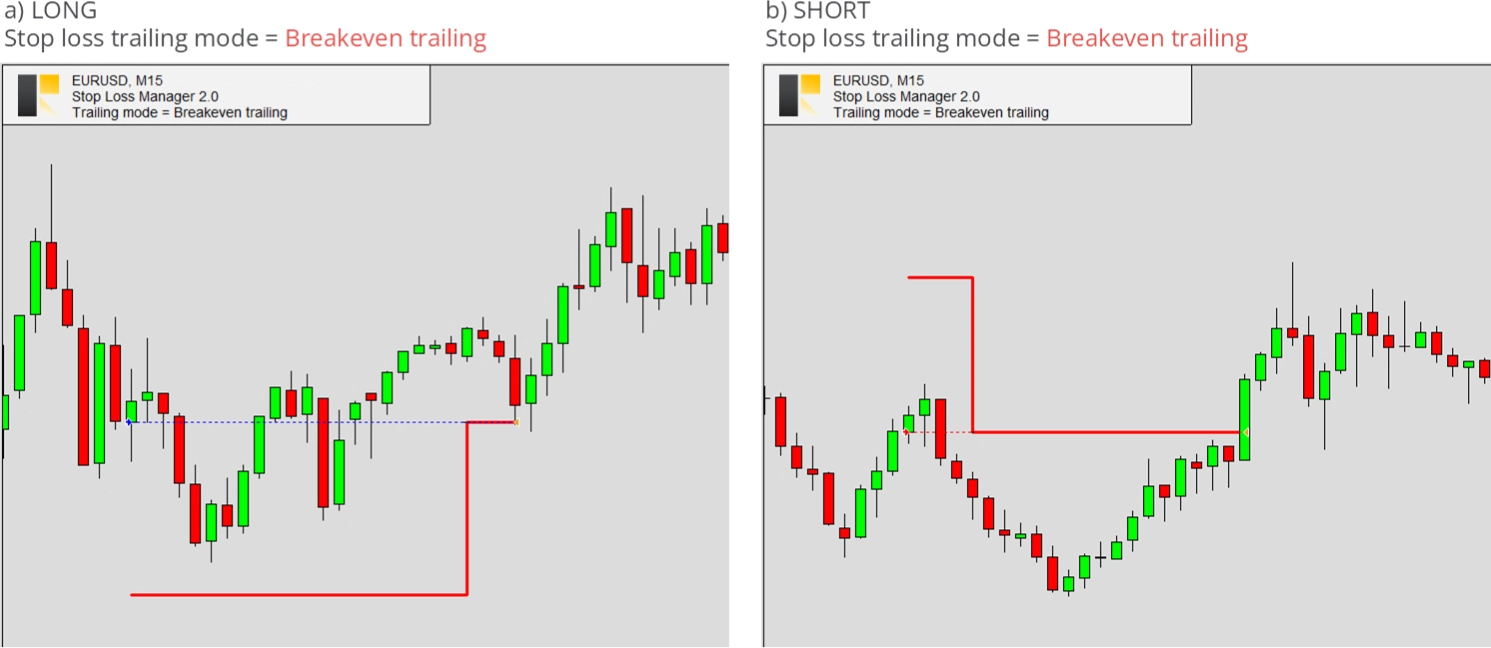Trailing Modes
The Stop Loss Manager has five distinct trailing methods, each carefully selected for their popularity among experienced traders. If you cannot find the desired behavior among these methods, it is recommended that you look into the Meta Extender. The Meta Extender offers a variety of additional trailing options, including the ability to combine different trailing methods. For instance, a trade's stop loss can jump to breakeven and then proceed with an average true range trailing.
The native trailing methods supported by the Stop Loss Manager are robust tools for manual trading. Let's briefly explain each selectable trailing method.
Market trailing
This method relies entirely on market techniques, meaning no algorithm is used. The open prices of previous candlesticks determine whether a stop loss is eligible to trail closer to the current price. This method allows a trade room to move, accommodating typical setbacks following a recent change. A setback is triggered when a sideways movement is detected after a sudden price increase or decrease. Market trailing is typically adequate for day and swing trading with its fast-moving prices. It's important to note that the setback level never exceeds the initial stop losses configured at the trade opening.
Here are some examples that illustrate the application of this method.
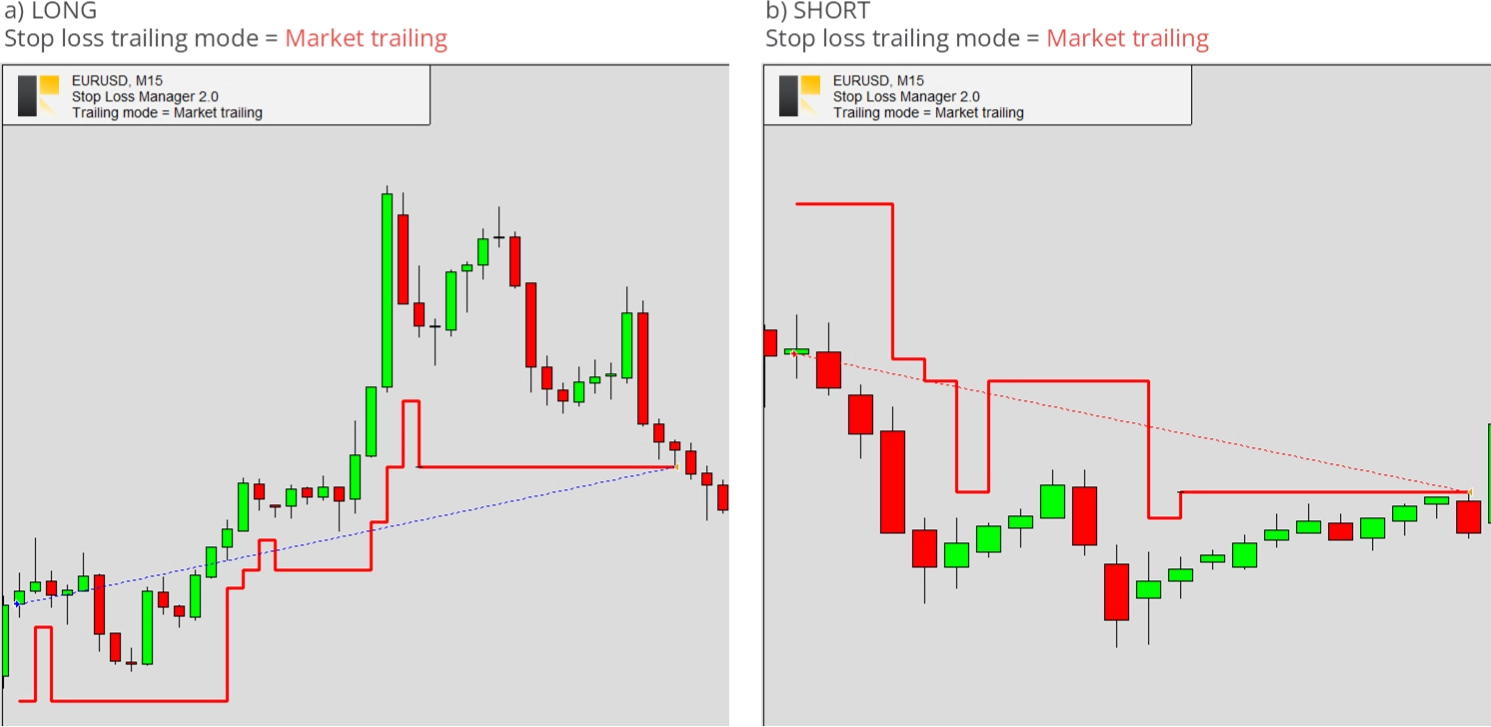
Average true range trailing
The average true range (ATR) is a volatility measure that helps traders understand the volatility of price movements in the most recent past. ATR trailing stops use the ATR indicator to adjust stop loss levels dynamically based on market volatility. This means the stop loss level moves with the price but only in the direction of the trade. It's a valuable tool for protecting profits and limiting losses in volatile markets. The higher the ATR value, the higher the level of volatility, and the further away the stop loss level can be.
Here are some examples that illustrate the application of this method.
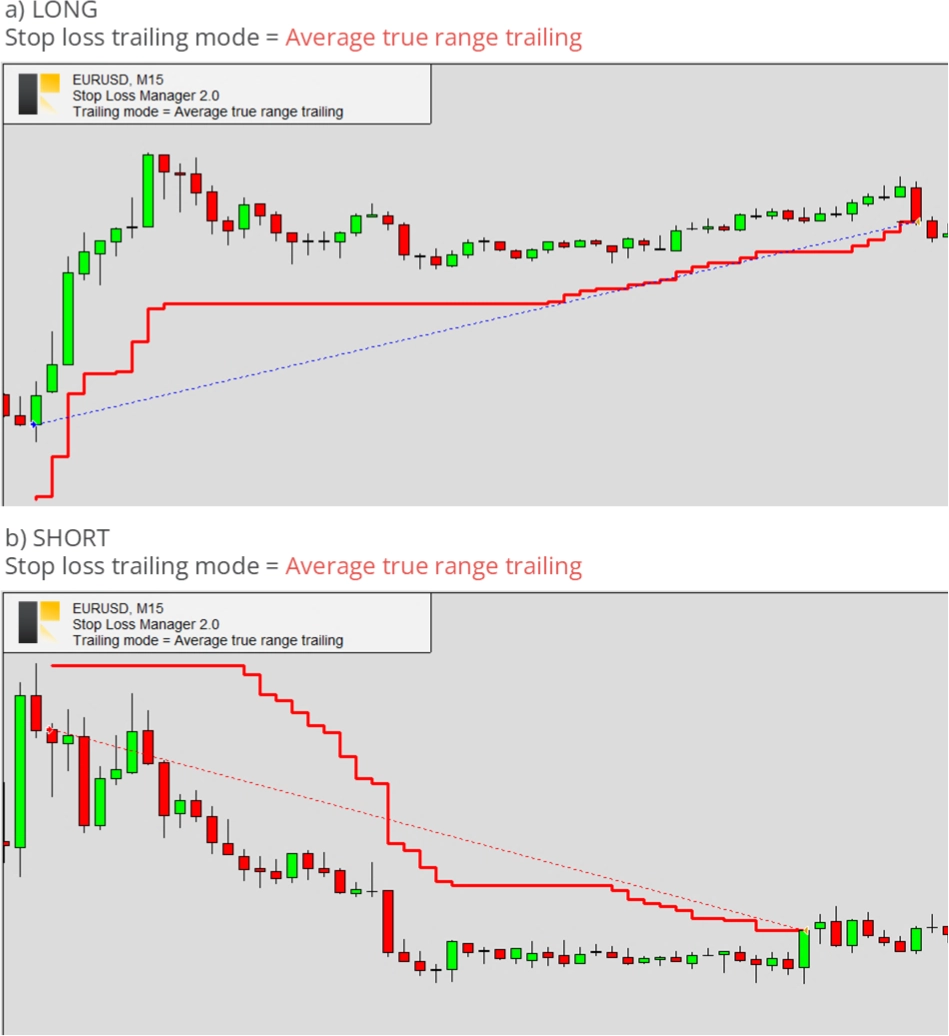
Parabolic SAR trailing
The Parabolic SAR is a technical indicator developed by J. Wells Wilder. It determines an asset's price direction and highlights potential reversals. Depending on the direction, the indicator appears as a series of dots on a chart, either above or below the price. A dot below the price indicates an upward trend, while a dot above suggests a downward trend. When the dots flip, it signals a potential change in price direction. This makes it a valuable tool for setting trailing stop-loss orders. As the indicator implies, its value is sometimes above or below the current price, which may lead to the stop loss seeming not to be trailing. Thus, the initial stop loss level may be static for an extended period. This is often the case in higher timeframes.
Here are some examples that illustrate the application of this method.
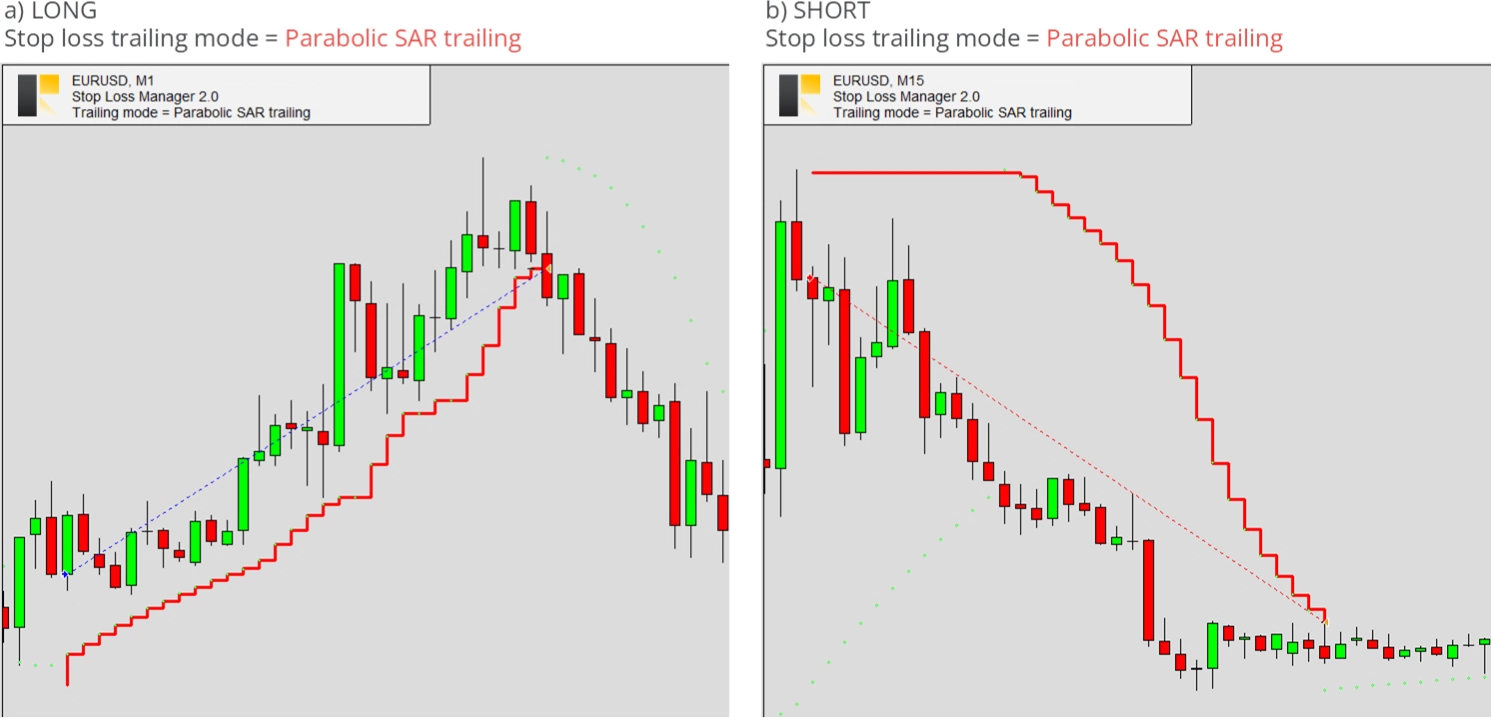
Fix distance trailing
This type of stop loss trailing maintains a fixed distance from the current market price. It's designed to lock in potential profits and limit losses. As the market moves in a profitable direction, the trailing stop moves at a fixed distance, maintaining a constant distance from the current price. If the market stops moving in the beneficial direction, the Stop Loss Manager keeps the stop loss at the last configured value. This strategy allows traders to protect their profits while allowing the price to fluctuate. When this trailing method is activated, the stop loss distance can be chosen manually in the chart or the Trade tab within the terminal view. The new stop loss distance is used for further trailing whenever you change the stop loss.
Here are some examples that illustrate the application of this method.
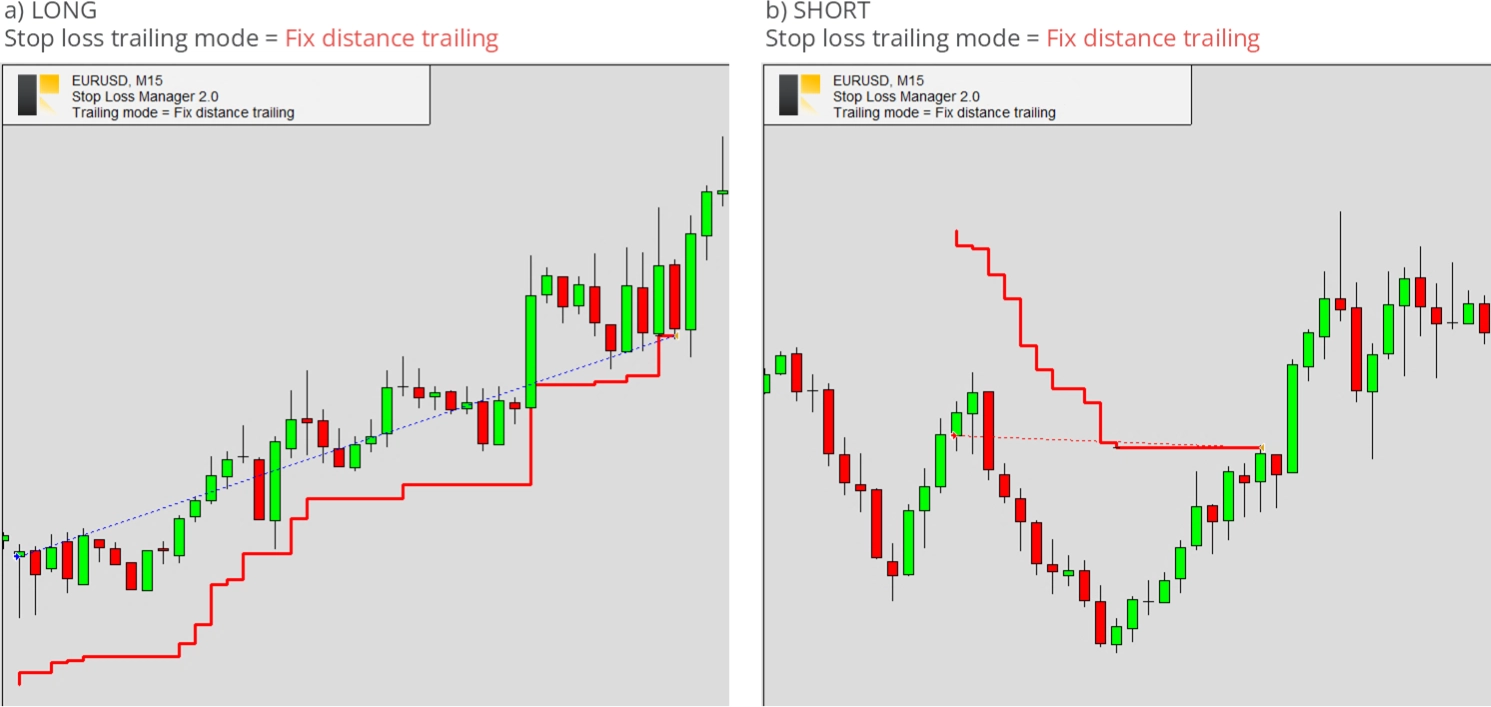
Breakeven trailing
This is a method where the stop loss order is adjusted to the entry price once a zero profit is realized. It ensures that the trade will not result in a loss from that point forward, not considering the effects of slippage or commission.
Here are some examples that illustrate the application of this method.
